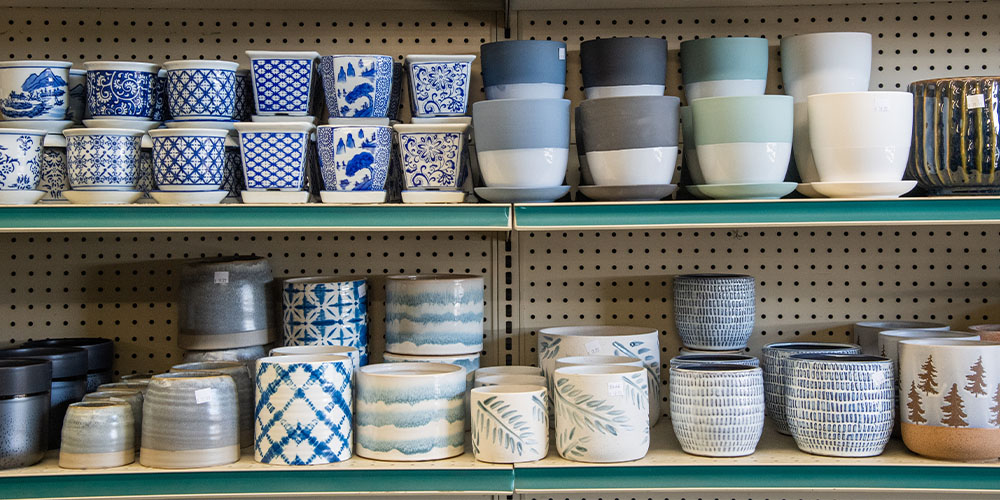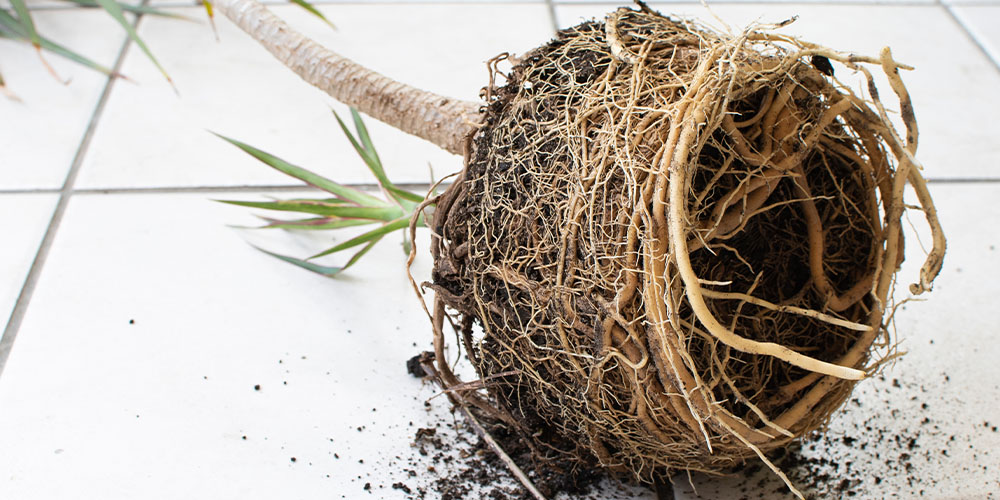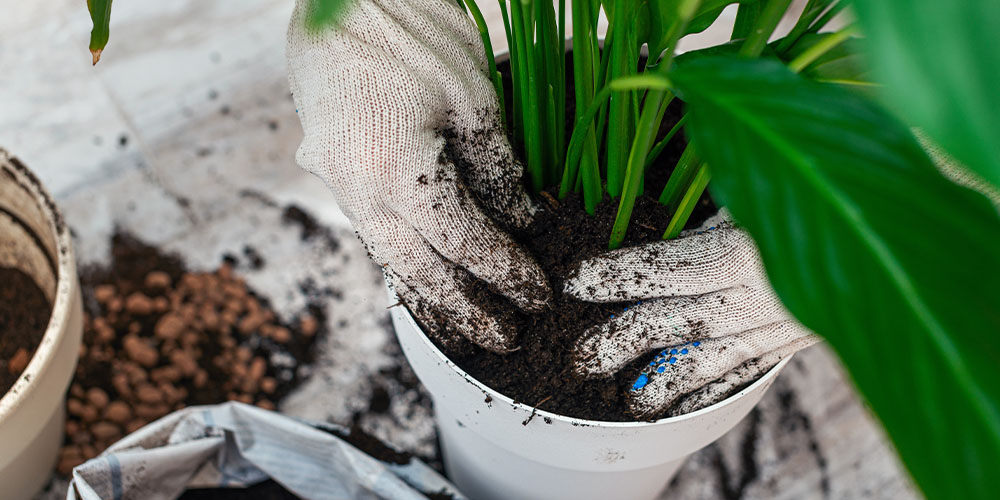How to Repot Your Houseplants Without Stressing Them Out
January 9, 2023
The best time for repotting is in the spring when plants kick-start their new growth for the year. If you do it then, they’re able to fill in the new space with fresh roots.
Sometimes the boundaries we put around our life become too small. We feel the urge to break through the old limitations, expand ourselves, and grow. Without a doubt, houseplants must feel this way too, and when they do, it’s our job to help them transition to a bigger pot. Here’s a step-by-step guide to when, how, and why to repot them!

How to Tell if Your Houseplant Needs a Bigger Pot
Houseplants are speaking to us all the time, and our task is to learn how to listen. That means observing the signs they are giving us. To tell if your houseplants need a bigger abode, look for the following clues:
- Roots are poking out of the top of the pot, or drainage holes in the bottom.
- The plant is top-heavy and keeps tipping over.
- Large amounts of salts and minerals are building up on the soil’s surface.
- You keep watering the houseplant, and it sucks up the water very quickly.
- The houseplant is rootbound. Check for this by lifting the roots out of the pot. If the roots are so dense that you can’t see any soil in the bottom third of the rootball, then it’s time to repot it.
What Is the Best Way to Repot Houseplants?
1. Select a New Pot and Potting Mix
Remember to choose a new pot that’s only one size, or 1-2 inches, bigger than the current one. A pot that’s too big causes soil to dry slowly, making your plant more susceptible to root rot. As for new soil, remember to use a potting mix, which is made specifically for potted plants, rather than garden soil, which is too dense and may carry pests. Keep in mind that succulents, cacti, and orchids require a special mix.
2. Gently Remove the Plant
The easiest way is to lay the plant pot on its side and gently ease it out. If it is stuck, loosen it around the edge with a butter knife or small trowel. Lightly pull on the base of your plant, if necessary, being careful not to break the stem or any leaves.
3. Gently Loosen the Roots
Once the houseplant is out, gently loosen the root ball with your fingers. Check for signs of rotting roots and cut them away. As the roots are a sensitive part of a plant, be careful not to disturb them more than necessary.

4. Place the Plant in Its New Pot
Place some fresh potting mix in the bottom of your pot first to ensure the plant is sitting at the right level. Then, set the houseplant inside, and backfill the rest of the pot with the potting mix. Make sure the plant is neither too high, nor too low; the soil surface should ideally sit about one inch below the rim of the pot. Press down around the stem to firm the plant into place.
5. Water the Plant Generously
As a finishing touch, remember to water your houseplant after replanting. This is to help the roots recover from any exposure to air, and help the plant settle in after the stress of transplanting.
When Is the Best Time to Repot Houseplants?
The best time for repotting is in the spring when plants kick-start their new growth for the year. If you do it then, they’re able to fill in the new space with fresh roots. You can also repot during the summer. Winter is not an ideal time to perform this task; if you repot them during dormancy, the roots don’t expand into the empty space, which makes watering more difficult. In general, you won’t need to repot more than once per year.

What If You Want to Keep Your Houseplant the Same Size
Sometimes a plant becomes rootbound and is ready to be repotted, but for various reasons, we want to keep the plant the same size as it is, rather than let it grow bigger. In these cases, you can remove the plant, gently trim away some of the roots, and return it to the same pot with fresh potting mix. Then, prune away some foliage on top, taking no more than 1/3 away at a time.
After you finish repotting, keep an eye on your houseplant to ensure it recovers from the move. If all goes well, they’ll be happy with the fresh nutrients from the new soil, and the extra space to expand!

For more tips on repotting houseplants, feel free to drop by our garden center in Glenside, PA!


